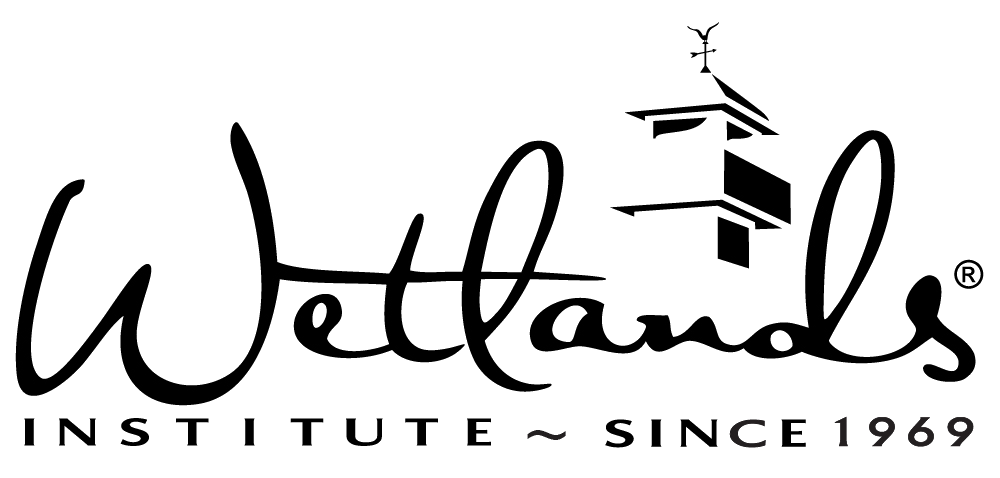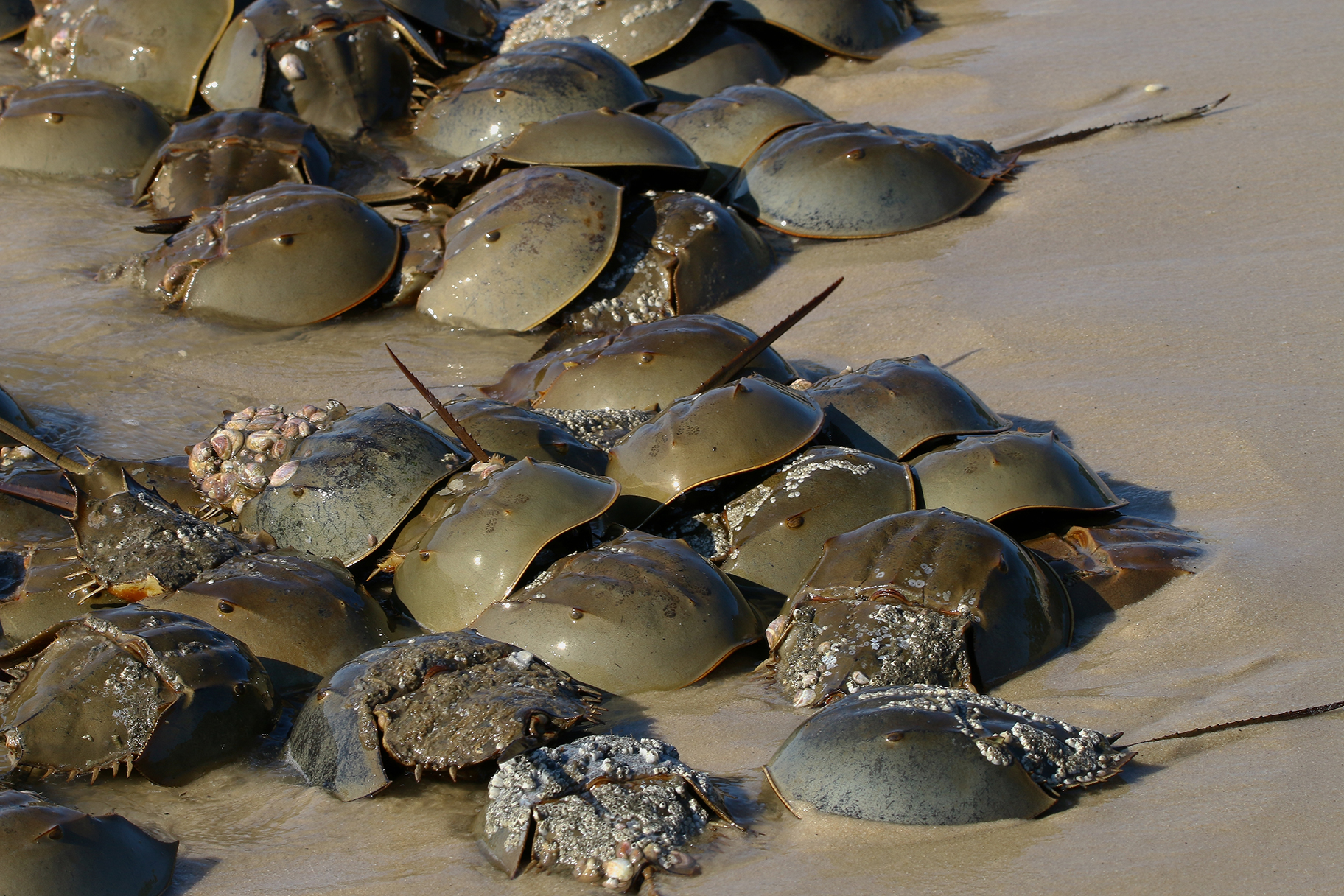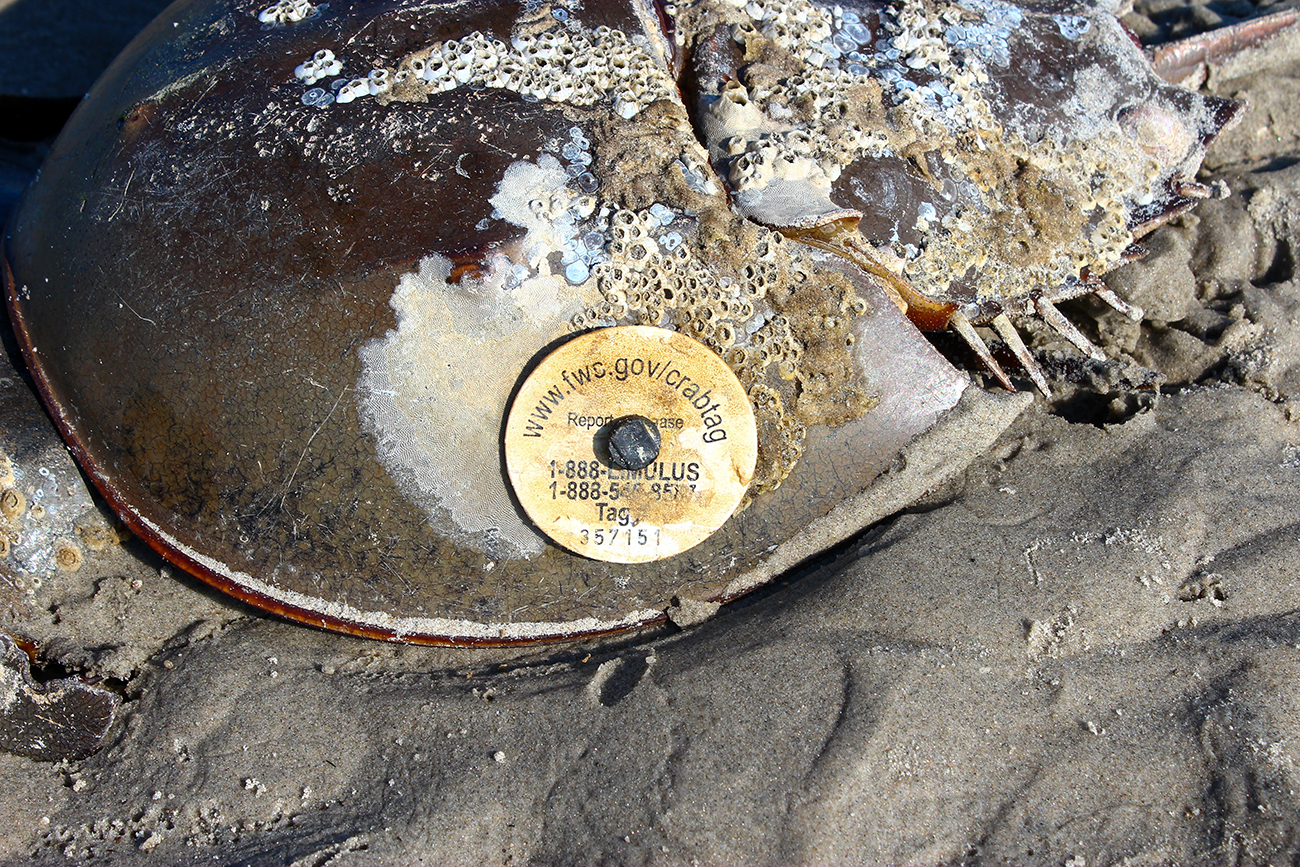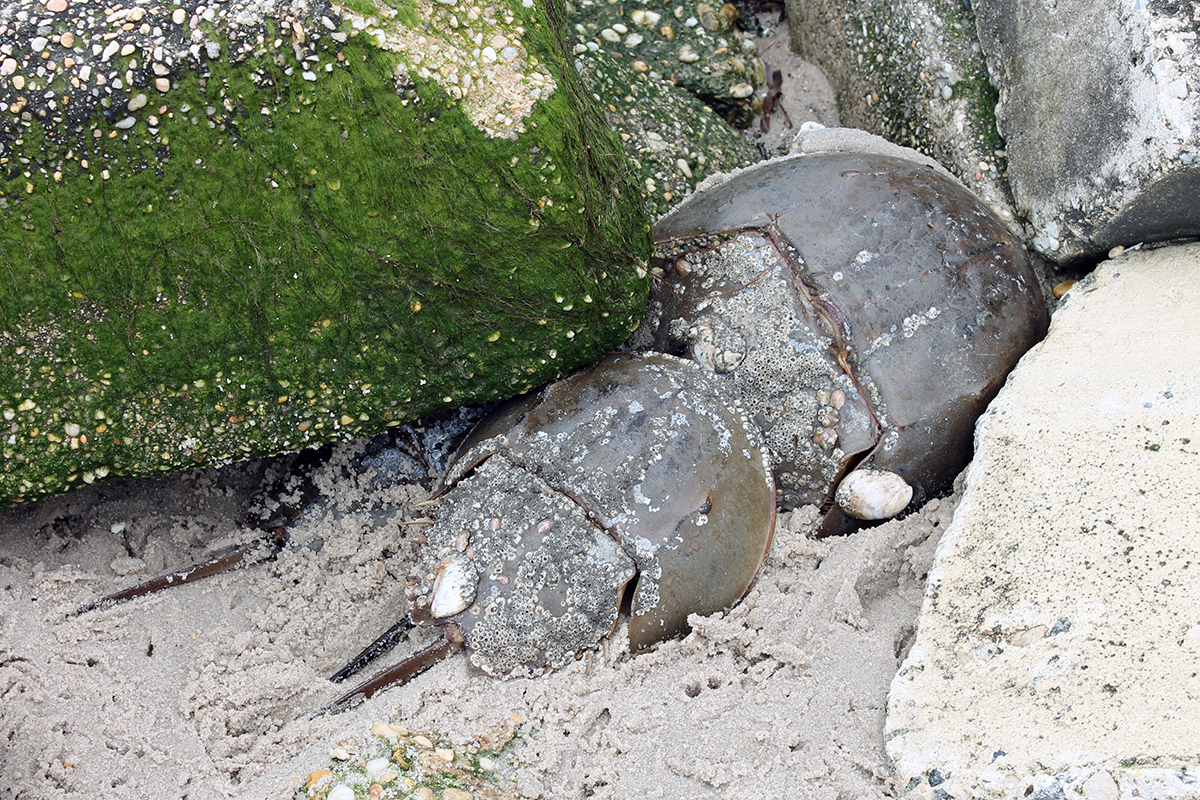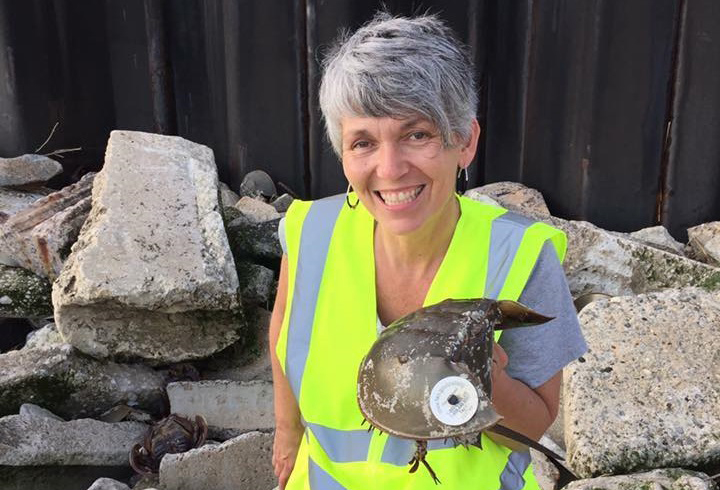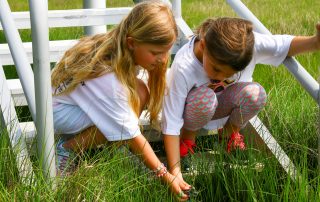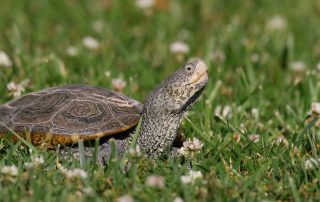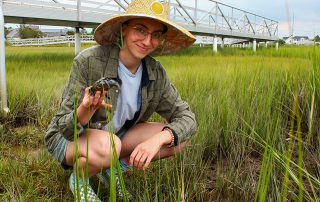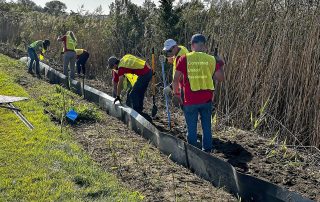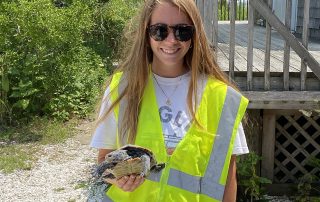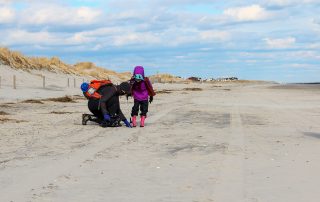The future is bright and support from our friends and donors is fueling this change and providing hope for a future filled with lush marshes, healthy coastal ecosystems, abundant wildlife, knowledgeable stewards, and caring and engaged communities.
The future is bright and support from our friends and donors is fueling this change and providing hope for a future filled with lush marshes, healthy coastal ecosystems, abundant wildlife, knowledgeable stewards, and caring and engaged communities.
A Message From Lenore:
Rising Higher
The Wetlands Institute is resolutely focused on serving our mission to preserve, protect, and steward our marshes and coastal ecosystems. The threats these systems face have shifted since The Wetlands Institute was first founded to address wetland loss to development. Our applied research programs have made great strides in pioneering work to elevate our marshes in their fight against sea level rise, through innovative projects that are giving hope to marsh preservation and with it retaining key refugia for the wildlife that depends on healthy marshes. Through work conducted right here, we are changing the landscape and bringing hope for a vibrant future. We are not only transforming the future of our marshes, but strengthening the east coast wetlands systems and providing hope for wildlife across the Western Hemisphere.
The intentional linkage between our research, conservation, and education programs is a distinctive strength that is making all the difference. Applied research informs best conservation practice; engaging conservation programs create positive change for habitats and wildlife; connecting people to stewardship through education creates lasting change.
These are important times. What happens here, now matters on a larger scale. We are making no small plans – and it has made all the difference.
A Message From Lenore:
Rising Higher
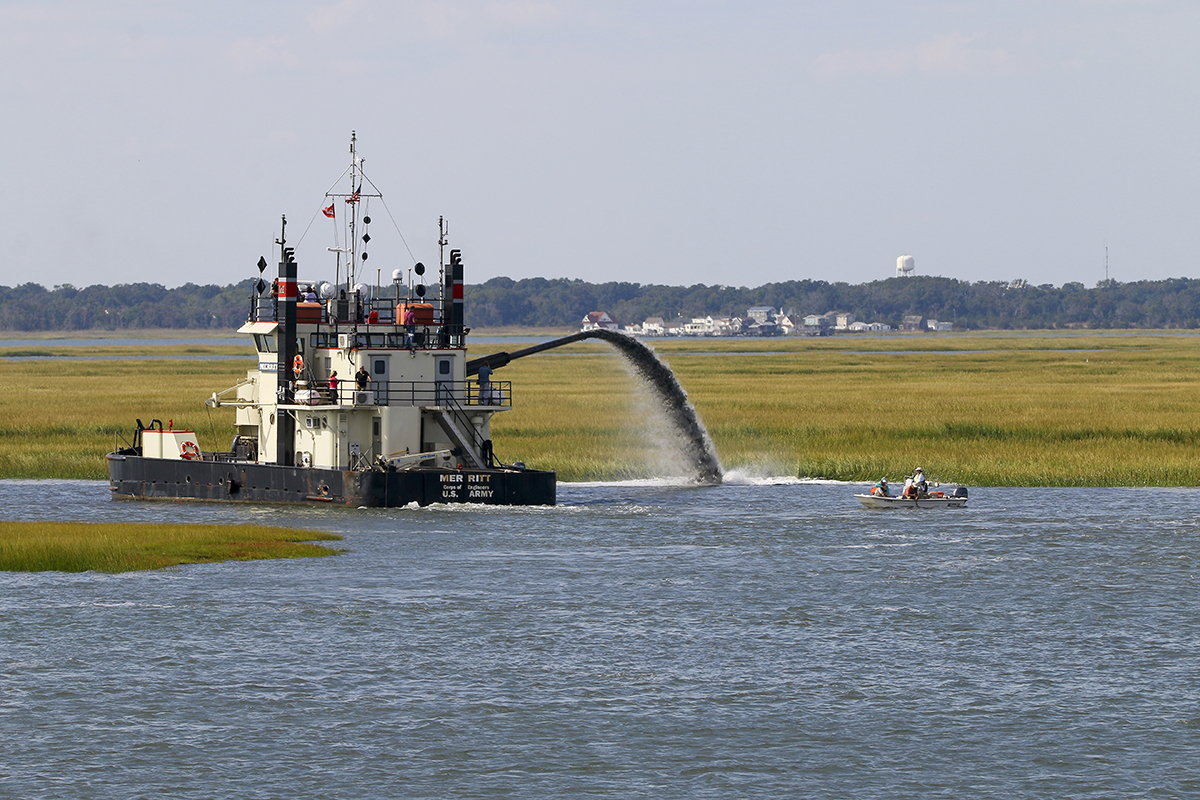
Monitoring innovative use of clean dredge material for marsh restoration
Monitoring innovative use of clean dredge material for marsh restoration
“As we work together to advance the concept of dredging and using sediment beneficially, we’re achieving tremendous progress along multiple fronts – improving maritime navigation, enhancing critical habitat, and bolstering coastal resilience.”
Monica Chasten, USACE Philadelphia District Project Manager
“As we work together to advance the concept of dredging and using sediment beneficially, we’re achieving tremendous progress along multiple fronts – improving maritime navigation, enhancing critical habitat, and bolstering coastal resilience.”
Monica Chasten, USACE Philadelphia District Project Manager
Growing From The
Ground Up
Growing from the
Ground Up
Coastal marshes, tidal creeks, and bays are the cradle of life. They host a phenomenal diversity of wildlife, and their intrinsic beauty is a balm for the soul. Tidal marshes flourish on the brink – daily to intermittent flooding brings life; repetitive deep flooding systematically destroys life. The marshes around The Wetlands Institute are drowning, and what were lush meadows only a few years ago are changing to mudflats right before our eyes.
Research team at newly restored Sturgeon Island where dredged sediment lifted the marsh, ensuring the marsh thrives for generations to come.
Research team at newly restored Sturgeon Island where dredged sediment lifted the marsh, ensuring the marsh thrives for generations to come.
New Jersey is now a national leader in marsh restoration because of the tools developed right here. The Wetlands Institute scientists and our colleagues from the US Army Corps of Engineers (USACE), the New Jersey Department of Environmental Protection (NJDEP), and the USACE Engineer Research and Development Center, formed the Seven Mile Island Innovation Lab. Together, we are working to help marshes add elevation more rapidly, and we are working as fast as we can.
The work of the Innovation Lab has already restored more than 85 acres of marsh, and an upcoming project in the marshes next to The Wetlands Institute will bring the total to over 100 acres. This local work will have a global impact, providing the “know-how” to make these projects more commonplace so that thousands of acres can be restored, ensuring critical links remain intact for generations to come. For example, many species of migratory birds, including Red Knots, Whimbrel, Semi-palmated Sandpipers, and others, rely on these marshes as they journey from South America to the high Arctic.
By transforming mudflats back to thriving marsh habitats these and many of the species returning here can be successful.

Sunny-day flooding drowning marshes

85+ ACRES OF
Marshes Restored
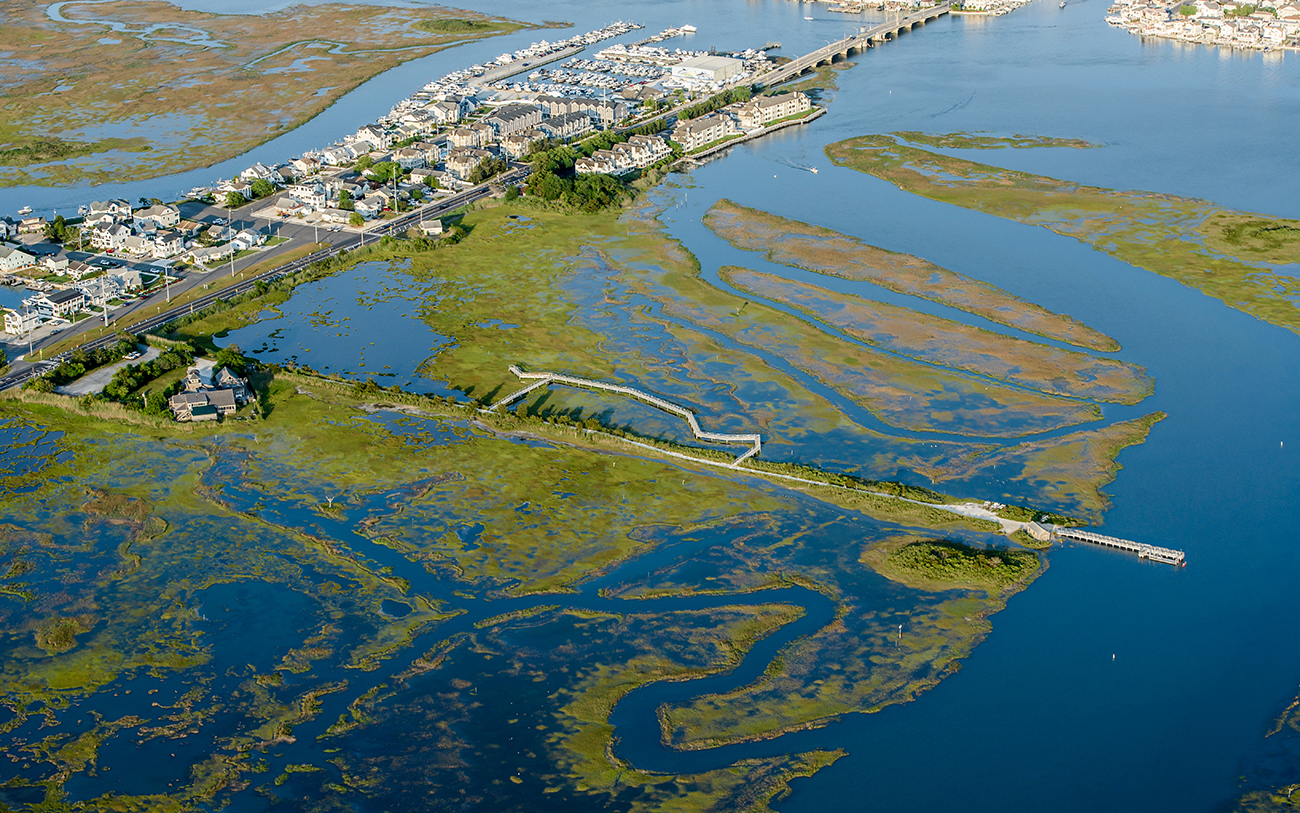
Sunny-day flooding drowning marshes

85+ ACRES OF
Marshes Restored
The Marsh
Cries Out
The Marsh
Cries Out
The Wetlands Institute was created to be a gateway for research and discovery of important marsh systems that extend along the Atlantic and Delaware Bay coasts and up and down the entire Atlantic seaboard. We experience the impacts of the increased frequency and intensity of coastal storms, nuisance sunny-day flooding, and witness species decline.
Our scientists work tirelessly to discover, develop, and implement groundbreaking solutions to the threats these ecosystems, their wildlife, and our coastal communities face. We focus on sentinel species that are foundational to marsh ecosystems. Using state-of-the art tools and working on multi-disciplinary teams, we advance knowledge to create positive change. Whether we are working to understand how wildlife are utilizing restored or created habitats, discovering important information about the life needs of declining species, or evaluating marsh response to changing conditions the marsh is our laboratory and classroom.
1 of 2
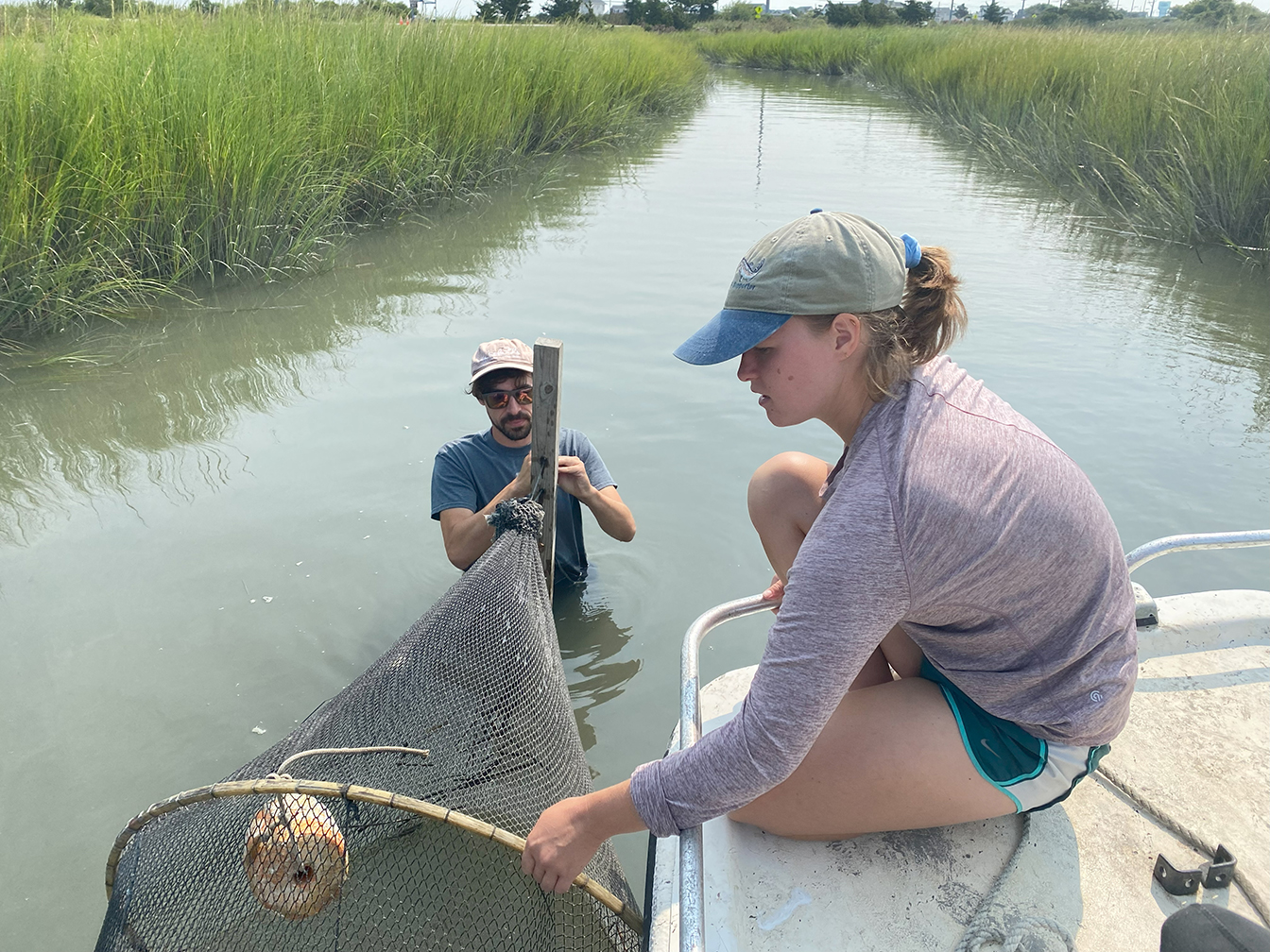
We are making great strides, advancing important conservation programs, including banding and tracking of Great Egrets and Black-crowned Night-Herons at dredge material placement sites, studying habitat needs of American Oystercatchers on Delaware Bay and their relationships to Atlantic coast beaches and marshes, and tracking Black Skimmers through banding and telemetry studies
1 of 2
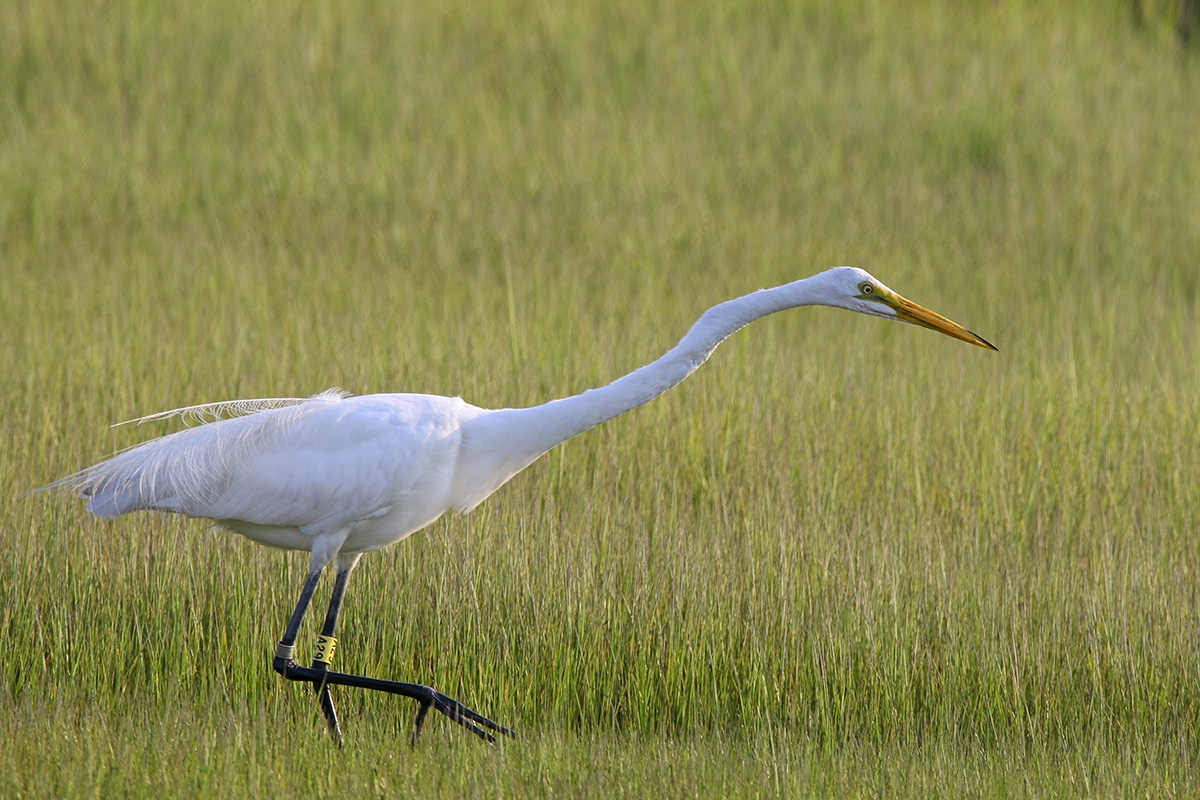
Our scientists and partners from USACE, NJDEP, the University of Pennsylvania, and the US Naval Academy are documenting how the marsh adjacent to The Wetlands Institute is failing, how wildlife is using these marshes, and designing a 12-acre marsh restoration project to rehabilitate drowning marshes using clean dredged sediments from the NJ Intracoastal Waterway.
1 of 2
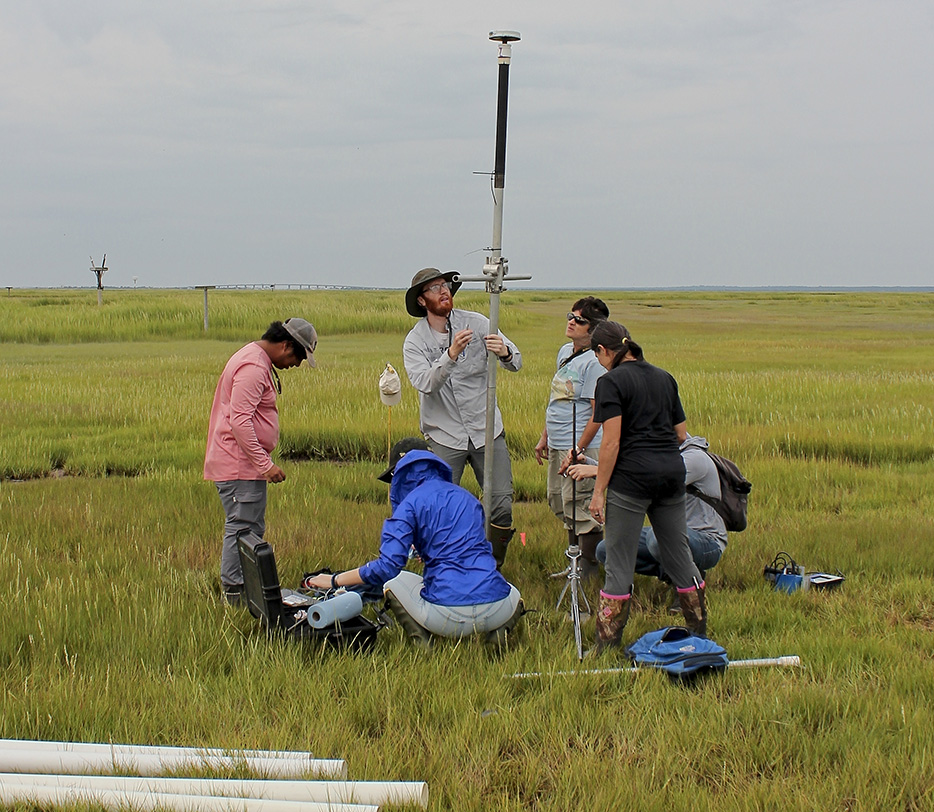
Our work this year resulted in 67 Black Skimmers banded, bringing our statewide total to 336 banded skimmers. We have accumulated over 3,100 documented sightings of NJ skimmers from locations ranging from Canada to Cuba and Mexico.

336 Skimmers
Banded
Our work this year resulted in 67 Black Skimmers banded, bringing our statewide total to 336 banded skimmers. We have accumulated over 3,100 documented sightings of NJ skimmers from locations ranging from Canada to Cuba and Mexico.

336 Skimmers
Banded
Connecting with Nature
And One Another
Connecting with Nature
And One Another
A core tenet of The Wetlands Institute’s conservation programs is using applied research to create a stewardship ethos through deep experiences for volunteers who make a difference.
For many, the connection to conservation and action comes from our educational programs. Nearly 17,000 children and young adults participated in formal education programs with The Wetlands Institute last year.
Using curriculum created by The Wetlands Institute education department, teachers and students from 12 schools across New Jersey spent the school year raising diamondback terrapin hatchlings hatched from eggs collected from road-killed females so the hatchlings can be released back into the wild.
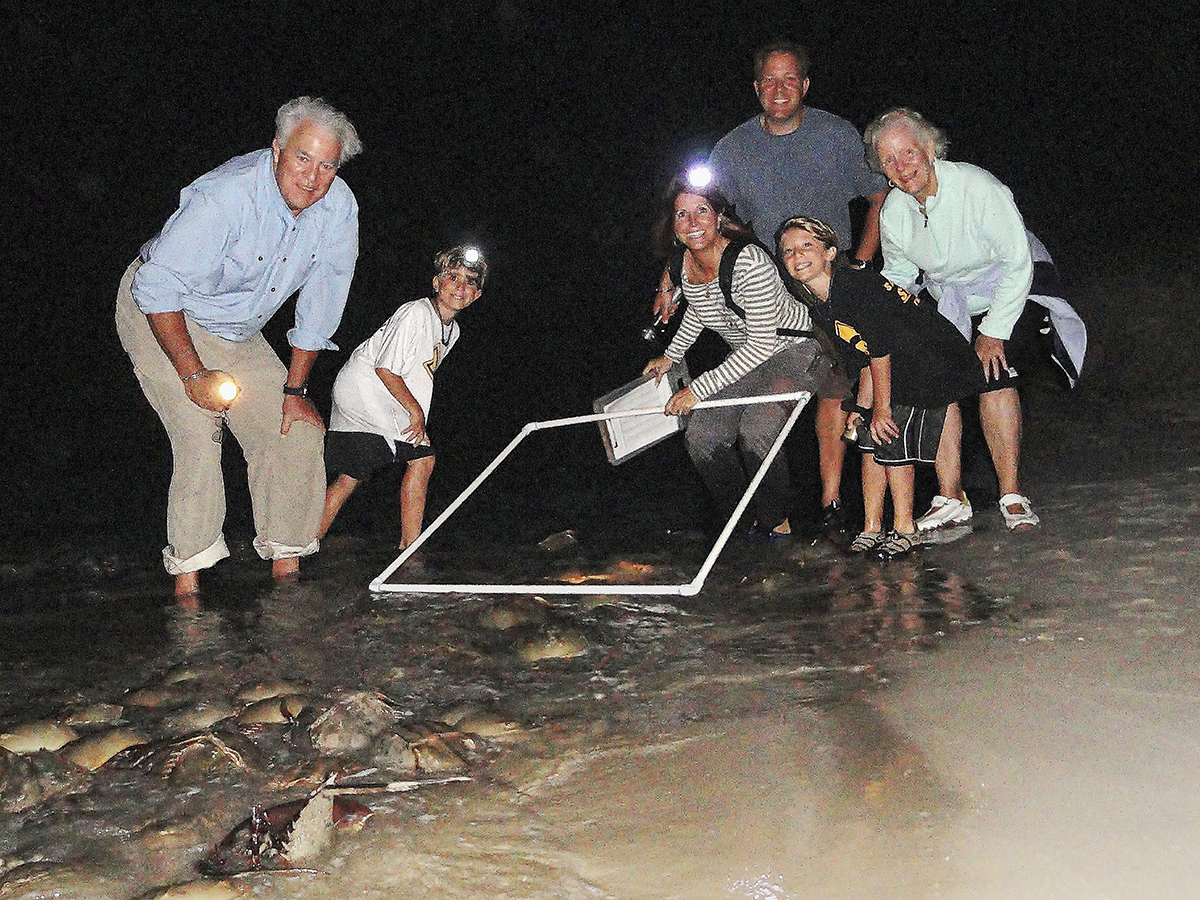
“My favorite Wetlands Institute memory was going out in the middle of the night as a young kid with a group of scientists and volunteers to count mating horseshoe crabs along the beaches of Delaware Bay.”
Garrett Roach, 3rd generation Wetlands Institute volunteer

1M Horseshoe
Crabs Saved
In 10 Years

362 Terrapin
Hatchlings
Released
Back into the
Wild In 2023
For many, the connection to conservation and action comes from our educational programs. Nearly 17,000 children and young adults participated in formal education programs with The Wetlands Institute last year.
Using curriculum created by The Wetlands Institute education department, teachers and students from 12 schools across New Jersey spent the school year raising diamondback terrapin hatchlings hatched from eggs collected from road-killed females so the hatchlings can be released back into the wild.

1M Horseshoe
Crabs Saved
IN 10 Years

362 Terrapin
Hatchlings Released
Back into the Wild
in 2023
“In the spring of 2000, I participated in my first ever turtle release at The Wetlands Institute as part of their Diamondback Terrapin Conservation Project. I was 5 years old at the time and a student in Mrs. Dean’s Stone Harbor Elementary kindergarten class. Sixteen years later I was a marketing intern at The Wetlands Institute and I was thrilled to document the 25th Anniversary of Mrs. Dean leading her kindergarten class in the annual turtle release, which would also be her last.”
Victoria Deever
“In the spring of 2000, I participated in my first ever turtle release at The Wetlands Institute as part of their Diamondback Terrapin Conservation Project. I was 5 years old at the time and a student in Mrs. Dean’s Stone Harbor Elementary kindergarten class. Sixteen years later I was a marketing intern at The Wetlands Institute and I was thrilled to document the 25th Anniversary of Mrs. Dean leading her kindergarten class in the annual turtle release, which would also be her last.”
Victoria Deever
A Valuable Investment
A Valuable Investment
Rising Up
Rising Up
The Wetlands Institute operates through a diverse array of funding sources that range from competitive research contracts and grants, fee-based program services like admissions and summer nature programs, and through significant philanthropic activities. Over the past 10 years, except during COVID, our revenues have consistently grown. We are addressing complex environmental challenges, and our recognized impact is attracting more and more support. The excellence of educational programs and the importance they have for today’s youth is leading to record enrollments. At the heart of our growth is support from donors with gifts, large and small, that drive our excellence.
2023 Revenue ($2.4M)
Grants Funding: $69,143
Gifts/Memberships: $1,254,810
Program Income: $798,549
Invested Funds: $282,850
Putting Funds to Work
Program Services: 77%
Administrative: 15%
Fundraising: 8%
Eric and Susan Wiseman on
Supporting the Wetlands
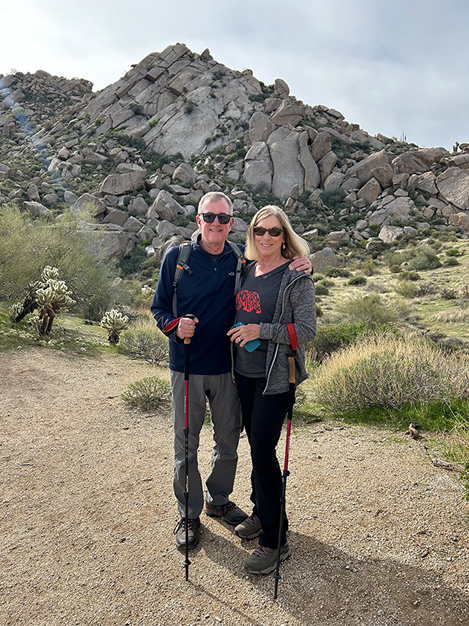
We’ve had the blessing of spending summers on 7-Mile Island for most of our lives. This is a special place… but you likely already know that.
We’ve had the blessing of spending summers on 7-Mile Island for most of our lives. This is a special place… but you likely already know that.
Our philanthropic priority is to help the communities we live in thrive by investing in initiatives that make an important difference and that are led by very capable people. And while there are certainly many things thriving here, our marshlands are not. In fact, they are facing a serious threat from rising water levels and erosion. We live on the bay and seeing the marshland completely flooded is frightening to say the least. Last summer the first major flood was early, and nearly all the bird nests with eggs were washed away in one event.
The good news is that The Wetlands Institute has a proven answer to this challenge. Over the last 10 years they and their partners have been depositing clean dredged sediments from the bay to raise the height of the marsh, and it works! To date they have successfully elevated nearly 100 acres of marshland. We’ve toured the back bay with Dr. Lenore Tedesco to see the results up-close. Seeing this motivated us to invest in The Wetlands Institute to expand their capacity for marsh restoration. We’re in, because not addressing this challenge will change life on 7-Mile Island as we know it. And, as boaters, we love the dual benefit of improving the depth of the bay while rebuilding the marsh and helping protect all the species that call it home.
Eric and Susan Wiseman on
Supporting the Wetlands


100 Acres
Elevated
